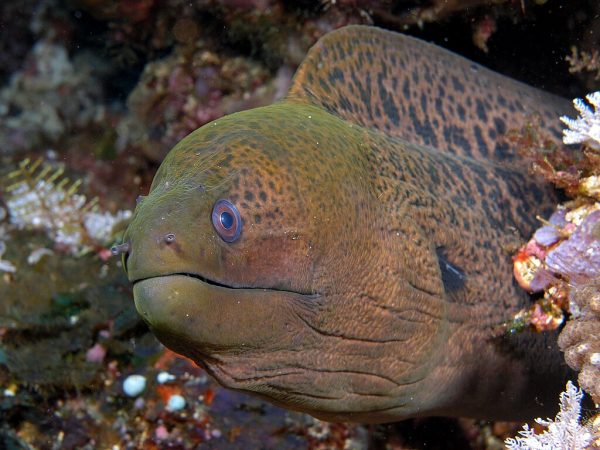Just like any other part of the animal kingdom, there are dangerous creatures and benign ones. The Maldives does have some of these kinds of life, and even though it’s highly unlikely that your life will truly be in danger, it’s still important to see how a mishandled denizen of the water can be of some threat, be it through poison or simply an aggressive manner.

Lionfish
The lionfish, also known as the zebra fish, is a part of the scorpion fish family and have varied physical features according to their species. This kind of fish is known for the venomous spines on their fins, which can be quite painful to be wounded by. The venom itself causes paralysis in the skeletal and respiratory muscles, causing pain and further worsening of the condition if not treated. It should be noted that the fish is quite calm if not disturbed – be careful not to threaten them.
Moray Eel
Quite easy to spot during a snorkelling or diving session, these imposing creatures can grow to a length of 1.5 metres and have gained quite an unfortunate reputation – perhaps due to their appearance! With a smooth and scaleless appearance coupled with strong teeth-lined jaws, it’s a sight to behold, truly. Nonetheless, these creatures are quite calm and do not attack unless provoked, contrary to how they appear.
Blue-ringed Octopus
The octopi under the genus Hapalochlaena cover four highly venomous species, found in the tide pools and coral reefs of the Indian Ocean. Identified by yellowish skin and highly characteristic blue and black rings, these rings change colour quite vividly as a warning to predators and attackers. Although they’re quite small (12-20cm), the venom they produce through saliva is the deadly neurotoxin Tetrodotoxin, whose effects have no antidote and are catastrophic. As far as adventures in Maldives go, this is one creature that can cut it short.
Blue-spotted Stingray
This species of stingray is quite common in the Maldives, associated with coral reef habitats. Many of these species bury themselves on the seafloor, causing poisonings as people step on them by accident although the creatures themselves are timid towards humanity. The venom produced is cardiotoxic, and the wounds can be excruciating. Watch for its bright blue spots that are displayed when threatened to avoid such mishaps, as many stingray colonies are within reach of resorts in the archipelago, such as the Adaaran Prestige Water Villas.
Fire Coral
An unexpected addition to this list, the Fire Coral isn’t actually a coral, but a marine organism that is closer to a jellyfish or anemone – a hydrocoral. Its danger lies in the fact that its tentacles can do a power sting to unsuspecting trespassers, the severe pain of which can last up to a fortnight, and its external skeleton is calcified and is quite abrasive to the skin.








